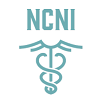Treatment for Ataxia and Gait Disorders in LA
Ataxia translates to a lack of order and describes a condition in which the affected person suffers from lack of muscle coordination. Usually, the condition is a sign of an underlying problem and also creates difficulties with eye movement, swallowing, and speech.
Persistent ataxia is a sign of a damaged cerebellum. Factors that contribute to the condition include stroke, certain medications, tumor, alcohol abuse, multiple sclerosis, brain degeneration, and cerebral palsy. Ataxia can also be inherited via defective genes.
According to the National Ataxia Foundation, the condition affects around 150,000 people in the U.S. The type of treatment depends on the underlying issue. Occupational therapy, physical therapy, speech therapy, and aerobic exercises help decrease the severity of the symptoms whereas canes or walkers assist patients in reclaiming some degree of independence.
Symptoms of ataxia vary depend on the severity of the condition. If it develops due to inherited genes, the symptoms emerge from birth. If it develops due to another health condition or an injury, the symptoms can begin at any age.
Common symptoms include trembling, shaking, or tremors in certain parts of the body, difficulty in swallowing, poor limb coordination, speech problems, hearing and vision problems, issues with balance, and even depression due to living with the condition.
Other forms of ataxia are Ataxia telangiectasia and Friedreich’s ataxia that usually occur at childhood and between the ages of 10 and 15 respectively.
As with most other movement disorders, ataxia has no known cure. There are, however, ways to ease the symptoms and improve the quality of life. Dr.Farzin Pedouim is a board certified neurologist based in Huntington Beach and Los Angeles. He addresses balance and coordination issues, muscle spasms, and speech problems using physical and occupational therapy that enhance strength and improve mobility.
Dr. Pedouim also suggests vitamins and medication to help patients get back on track.
